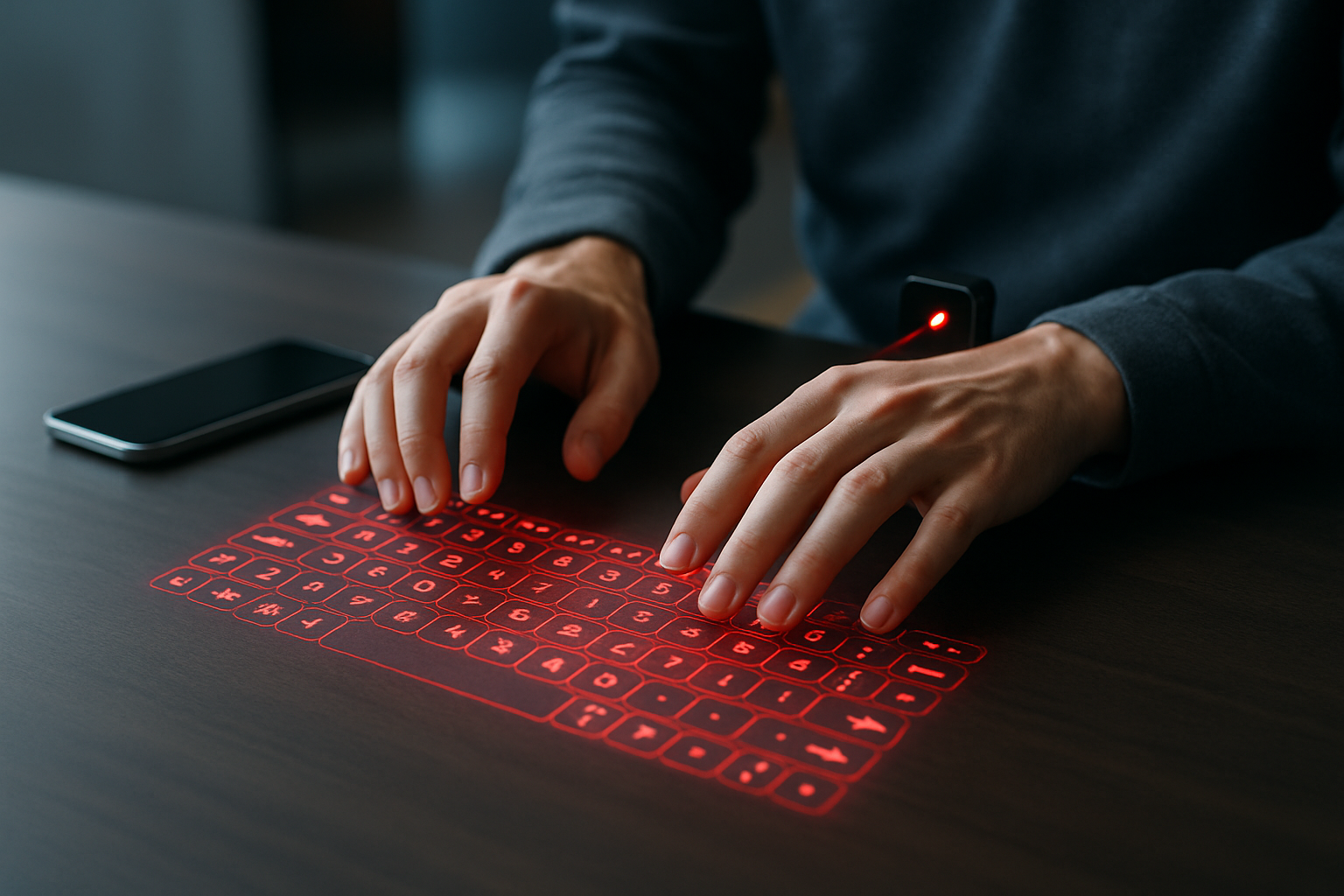Holographic Keyboards: The Next Frontier in Mobile Typing
In an age where our smartphones are becoming increasingly powerful and versatile, one aspect has remained stubbornly unchanged: the typing experience. Enter holographic keyboards, a futuristic technology that promises to revolutionize how we input text on our mobile devices. This cutting-edge innovation projects a virtual keyboard onto any flat surface, allowing users to type with the familiar tactile feel of physical keys, all while saving valuable screen real estate.

The Evolution of Mobile Input Methods
The journey of mobile text input has been a long and winding road. From the early days of T9 predictive text on numeric keypads to the rise of BlackBerry’s physical QWERTY keyboards, mobile typing has constantly evolved to meet the needs of an increasingly connected world. The introduction of touchscreen keyboards with the iPhone in 2007 marked a significant shift, trading tactile feedback for larger displays and more versatile interfaces.
However, touchscreen keyboards have their limitations. They take up valuable screen space, can be prone to typos, and lack the satisfying tactile feedback of physical keys. This has led to a constant search for alternatives, from swipe-based input methods to voice recognition technology. Holographic keyboards represent the latest attempt to solve these persistent challenges.
How Holographic Keyboards Work
At its core, a holographic keyboard system consists of three main components: a laser projector, an infrared sensor, and sophisticated software. The laser projector casts an image of a full-sized keyboard onto any flat surface. When a user “presses” a key, the infrared sensor detects the position and movement of their fingers. The software then interprets these movements as keystrokes, translating them into text input for the device.
One of the most impressive aspects of this technology is its ability to adapt to different surfaces and lighting conditions. Advanced algorithms can adjust the projection and sensing parameters in real-time, ensuring consistent performance whether you’re typing on a desk, a cafe table, or even your lap.
Advantages Over Traditional Input Methods
Holographic keyboards offer several potential advantages over traditional mobile input methods. First and foremost is the ability to provide a full-sized keyboard experience without sacrificing screen real estate. This could be particularly beneficial for tasks that require extensive typing, such as composing long emails or working on documents.
Another significant advantage is portability. Unlike external Bluetooth keyboards, a holographic system doesn’t require any additional hardware to be carried around. It’s always available when you need it, but completely disappears when you don’t, making it an ideal solution for on-the-go productivity.
Customization is another area where holographic keyboards could excel. Since the keyboard is projected, its layout and design could be easily changed to suit different languages, preferences, or even specific applications. Imagine seamlessly switching between a standard QWERTY layout and a specialized interface for video editing or music production, all without changing your physical device.
Challenges and Limitations
Despite their potential, holographic keyboards face several challenges that need to be overcome before they can become mainstream. One of the most significant hurdles is achieving the level of accuracy and responsiveness that users expect from modern typing interfaces. Early prototypes have struggled with latency and precision issues, which can lead to a frustrating user experience.
Power consumption is another concern. Projecting a keyboard and constantly sensing finger movements requires a significant amount of energy, which could put a strain on already-taxed smartphone batteries. Manufacturers will need to find ways to optimize the technology for mobile use without compromising performance.
Environmental factors also pose a challenge. Bright sunlight can wash out projections, making the keyboard difficult to see outdoors. Uneven or non-reflective surfaces might interfere with both projection and sensing, limiting where the technology can be used effectively.
The Road to Commercialization
Several tech companies and startups are working to bring holographic keyboards to market. While exact pricing is not yet available, industry analysts estimate that early consumer versions could range from $100 to $300 as standalone accessories, with the potential for integration into high-end smartphones in the future.
The impact on the mobile device market could be significant. If holographic keyboards prove successful, they could influence smartphone design, potentially allowing for even larger displays or smaller overall device sizes. They could also open up new possibilities for wearable technology, enabling smartwatches and augmented reality glasses to offer full typing capabilities without physical constraints.
As with any emerging technology, widespread adoption will depend on factors such as user acceptance, technological refinement, and integration with existing ecosystems. However, if holographic keyboards can deliver on their promise of combining the best aspects of physical and virtual keyboards, they may well represent the future of mobile text input.





